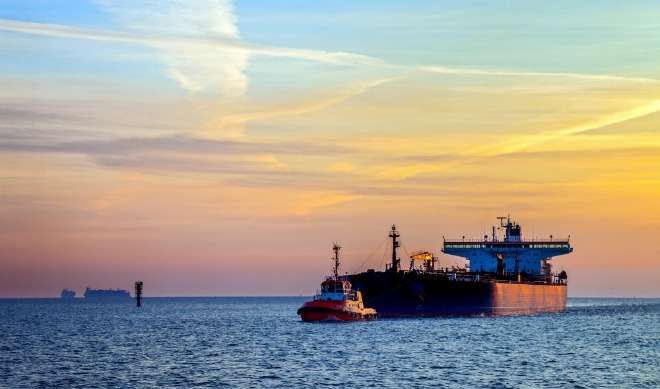Shipping’s decarbonisation puzzle: a barometer of industry views

Castrol’s Cassandra Higham reveals details of a decarbonisation survey her firm carried out with owners, operators and managers.
Shipping is on a journey towards decarbonisation. The next ten years look set to be some of the most transformative years on record, as the industry adapts to the International Maritime Organisation’s (IMO) target to reduce CO₂ emissions by at least 40% by 2030.
Decarbonisation of the shipping industry is the end goal, but the pathway has several milestones. We passed one of these in January 2020, when the global sulphur cap was implemented.
A significant share of shipping’s decarbonisation mission will be achieved in the engine room. New low-carbon fuels and more efficient engines are likely to be key contributors to the reduction in emissions. Similar to the sulphur cap, such changes could drive immense technical challenges at a time of acute capital constraint for owners and operators.
We believe that decarbonisation is a puzzle of several parts. That is why, in early 2020, Castrol surveyed 50 high-level individuals including owners, operators and managers, to get a sense of the industry’s understanding of this decarbonisation challenge.
Our questions did not anticipate COVID-19 and the fresh challenges it has created for our sector. Nevertheless, the results are fascinating, and reveal tremendous insight into how leading figures in our sector see the future unfolding.
Our questions explored three areas: sulphur cap implementation, the integration of alternative fuels, and preparing for decarbonisation. Castrol sees these as the three biggest pieces of the puzzle required to make significant progress in rapidly, and profitably, achieving a zero-carbon future for shipping.
Adapting to global sulphur regulations
The sulphur cap joins a list of emissions regulations that have tested the shipping industry, ahead of imminent IMO carbon targets for 2030 and 2050.
Rewinding to 1 January 2020, from a technical and engine point of view the transition was reasonably smooth. There were pockets of supply challenges for some operators in certain markets, with IMO data suggesting that Brazil was the worst impacted country for VLSFO availability in the first part of 2020.
Around 60% of our interviewees tended to agree, saying that they believed the sector was adapting “well” or “very well”. Long-term planning ahead of implementation appears to have paid off.
However, half of respondents raised concerns regarding compliant fuel availability and the integrity of supply chains in the medium term.
Some raised a concern that the industry’s response was not as radical or collaborative as it could have been. One key lesson learnt from the sulphur cap is that future environmental regulations need to prompt a more active response from the industry.
Alternative fuel uncertainty
Next, we examined alternative fuels and how major owners and operators are preparing for a future with lower carbon, alternative fuels.
It is fair to say that the transition to these future fuels represents the biggest single hurdle the shipping industry must overcome to meet its decarbonisation targets. To navigate it successfully, we will need an unprecedented level of collaboration between fuel suppliers, OEMs, lubricant providers and owners, operators and managers.
Unsurprisingly, the adoption of alternative fuels has remained on the low side; only 28% of respondents had engaged with a supplier or put plans in place to do so in the near future.
The survey results clearly show that alternative fuel suppliers will need to be more confident in their capabilities once they are being used at scale. These results reveal that major owners and operators believe that a large part of shipping’s fuel mix will continue to rely on the fossil status quo of VLSFO, ULSFO and LNG for at least 15 years.
It was better news for biofuels suppliers, who came top of the rankings after fossil fuels, with 77% of respondents confident that methanol and biofuels will be widely used by 2035.
However, the prospects for hydrogen and ammonia were viewed in a less promising light. These fuels were the lowest ranked in terms of confidence, with 46% and 42% of respondents respectively having “low” to “very little confidence” in their commercial viability as a future fuel.
Owners and operators want to understand the credible solutions on offer so they can reasonably trial and test. This sets the challenge for all lower carbon fuel suppliers to help prove to the market their solutions are viable.
Decarbonisation momentum
Finally, we examined decarbonisation planning. More than half said their organisations had undertaken “some planning”. Around 30% had undertaken no or limited planning. However, at the time of questioning – January 2020 – it can be argued that reducing carbon was not on the industry’s mind while implementing the sulphur cap.
As the previous section explored, low-carbon fuel and engine testing and innovation is still at a relatively early stage within shipping. Once these solutions approach market maturity, it is likely that shipowners and operators will feel they have the assurance needed to move their own decarbonisation planning forward.
On a brighter note, positive steps are being taken concerning emissions targets. Nearly two-thirds of respondents said they are aware that their organisation had set emissions reduction targets.
These organisational targets are encouraging first steps on the road to decarbonisation.
A call for direction
While the ‘test for emissions legislation’ with the sulphur cap was felt to have gone smoothly, it is clear ship owners and operators are waiting for more assurance about low carbon and alternative fuels. Only then could they move to decarbonisation transformation their fleets. Survey respondents were clear in their call for direction and collaboration if we, as an industry, are to decarbonise successfully and seamlessly.
One respondent effectively summarised the overriding sentiment as: “The 2020 Sulphur Cap is just a mid-point to decarbonisation. To me, it is only the start of many more changes and adjustments that the maritime sector must make to reduce the impact of our activities.”
